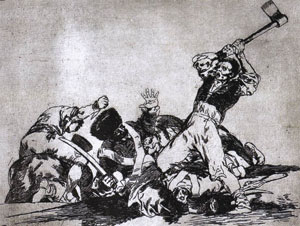War and its Representations

Alan Tansman (East Asian Languages & Cultures) and Kent Puckett (English)
There are texts that represent war directly—novels, films, photographs that grapple with the intensity, the violence, the excess or the justness of war. And there are texts that grapple with violence directly. But the affective experience of battle, the mundane quality of waiting, the absurdity of bureaucracy, the sociability of the home front, the texture of life lived in wartime: all of these are more indirectly war—are also subjects to which literature, cinema, philosophy, political theory, music and art, have regularly returned.
This course pairs texts—one directly representing some aspect of wartime, another doing so only obliquely, or seemingly not at all—created during periods of war in order to explore how thinking about violence, about war theory, about propaganda, about nation, about life and death, is embodied culturally. The course will begin with a set of central texts on war and its representation, such as Paul Fussell’s The Great War and Modern Memory, Mary Favret’s War at a Distance, and Susan Sontag’s Regarding the Pain of Others). Considering these texts in relation to other works—cultural, philosophical, scientific—which were produced at the same historical moments and which more directly support, criticize, or discuss war, will allow us to consider how war cultures have functioned within the terms of and beyond representation. It will also force us to consider the question: if there so many ways of being about war, is it possible, during times of war, to be about anything else?
This course evolved from faculty and graduate student discussions in the 2010-2011 Collaborative Research Seminar On War and its Representations.